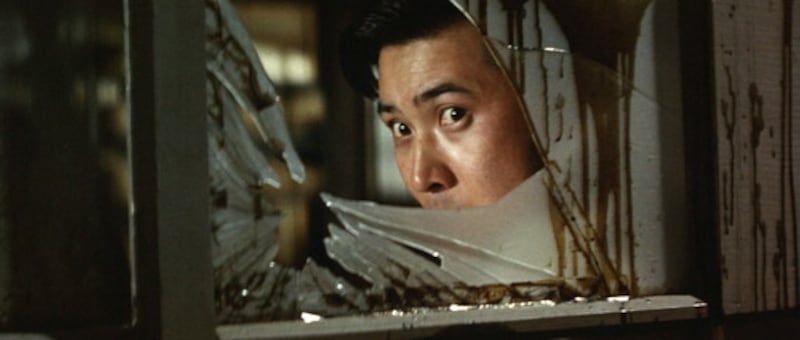I IMAGINE Quentin Tarantino gets a little sweaty of palm when the subject of Yakuza films comes up. There’s a base-level brutalism at play in those early 70s Japanese crime films and a cold “style over substance” veneer that doubtless gets the Pulp Fiction man a tad over-animated. I have no doubt that Hideo Gosha’s 1974 thriller Violent Streets works a very special kind of magic on him every time it crops up in conversation.
It may not be the greatest crime epic ever committed to celluloid, but it’s certainly one of the most unrelentingly visceral, bloody and most visually arresting which, in QT’s world at least, is doubtless something to get excited about.
Freshly restored and released by Eureka Entertainment as part of their ever evolving Masters Of Cinema range, Violent Streets certainly represents a remarkable slice of exploitation cinema. Taking a sharp turn away from the more traditional honour of the Samurai-based tradition, this sees Gosha focus in on the criminal underbelly of early 70s Tokyo.
Noboru Ando, an actor with a real life history of crime behind him, is Egawa, a former Yakuza boss who’s been released from prison and is now trying to put his gangster days behind him and make a go of his new life as the owner of a flamenco themed bar called the Madrid Club. The bar, gifted to him by fellow hoods for not ratting them out, is soon the subject of a bid by the same bad guys to reclaim it due to its criminal significance in downtown Tokyo.
Blood flows as punch-ups rattle on ruthlessly and memorable set pieces abound, including a battle in a chicken coup that leaves more than a few gangster feathers ruffled. The action is mostly located in strip clubs, tatty bars and mundane office blocks, which gives the simple tale a decidedly sleazy feel.
The shady world of pop music is explored when a singer (Minami Nakatsugawa) is kidnapped, and the sight of the gang in animal and horror masks as they go about their brutality lives long in the mind once the film is over.
Paper thin and cliché-driven as these hoodlums may be, there’s no denying the visual style on show here. It’s bright, bold and often dazzling to look at.
Of course, for the roots of Violent Streets, you need to back-track to Kinji Fukasaku’s 1973 masterpiece Battle Without Honour and Humanity, a film that forged the blueprint for a new, ultra-violent Japanese crime cinema and that left any romanticised ideas of honour among thieves well and truly at the door, preferring instead to amp up a cold hearted brutality and callousness
Suddenly, Japanese crime drama was all about bloody turf wars, dead-eyed killers thumping 40 shades of tripe out of each other while looking cool in shades and shiny suits. While inspired by American crime flicks like Dirty Harry and knife-sharp Brit gangster efforts like Get Carter, this was a seedy world of hardcore crime all on its very own.
Violent Streets takes that seediness and runs with it rather impressively.









